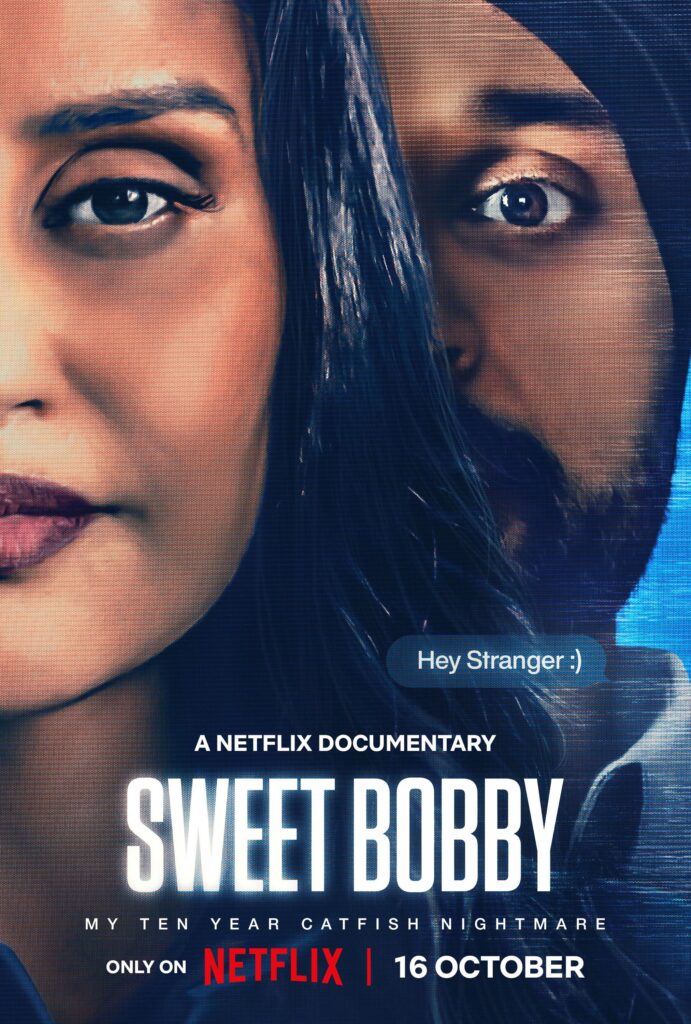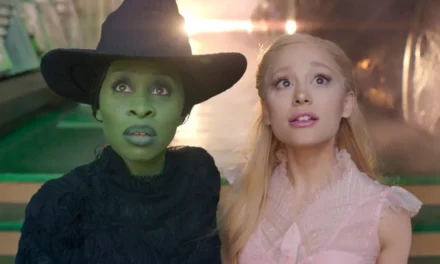Director:
Samira Osman
Plot Synopsis:
Sweet Bobby: My Catfish Nightmare delves into the unsettling true story of Kirat Assi, a successful British woman whose life was turned upside down by a sophisticated and relentless catfishing scheme. Directed by Samira Osman, this gripping 2024 documentary unpacks the complex dynamics of trust, manipulation, and resilience.
The film opens with Kirat’s recounting of an ordinary day when she received a friendly message from Bobby, a distant cousin. What began as casual conversations gradually evolved into a deep emotional bond. Over the span of a decade, Bobby’s fabricated persona drew Kirat into a web of lies, emotional manipulation, and psychological torment. As the truth behind Bobby’s identity unfolds, viewers witness the devastating impact the catfishing had on Kirat’s personal and professional life. The documentary takes a sharp turn as Kirat confronts her catfisher and seeks justice in a legal system ill-equipped to address such crimes.
Osman’s storytelling is enhanced by interviews with Kirat, her family, and expert psychologists, as well as digital recreations of the messages and phone calls that defined their twisted relationship. This multilayered approach immerses viewers in the emotional and psychological toll of being catfished while raising broader questions about online identity and accountability.

Review:
Sweet Bobby: My Catfish Nightmare is an emotionally charged and thought-provoking documentary that explores the blurred lines between digital intimacy and deception. Director Samira Osman masterfully captures the essence of Kirat Assi’s harrowing experience, transforming it into a cautionary tale for the digital age.
One of the film’s most compelling aspects is its pacing. Osman balances the slow revelation of Bobby’s fabricated identity with Kirat’s escalating sense of betrayal. The documentary builds suspense akin to a psychological thriller, keeping viewers on edge as new layers of the deception are uncovered. Yet, it’s never exploitative; the focus remains firmly on Kirat’s humanity and her courage in reclaiming her narrative.
The visual storytelling deserves special mention. Osman’s use of digital recreations is both innovative and effective. By visually reconstructing text messages, emails, and phone calls, the audience is given an intimate look at the manipulation tactics employed by Bobby. These recreations, paired with candid interviews and archival footage, create a deeply immersive experience.
Kirat Assi’s presence on screen is another strength of the film. Her raw vulnerability and unfiltered honesty make her a relatable and sympathetic figure. Her journey from victimhood to empowerment is inspiring, and her determination to raise awareness about online safety resonates long after the credits roll.
However, the film isn’t without its flaws. Some viewers might find the legal exploration somewhat underwhelming. While the documentary sheds light on the inadequacies of the justice system in addressing catfishing cases, it stops short of offering concrete solutions or broader systemic insights. This omission leaves the audience with lingering questions about how society can better support victims like Kirat.
Another potential drawback is the film’s limited exploration of the catfisher’s motivations. Although this choice aligns with the documentary’s focus on Kirat’s story, a deeper dive into Bobby’s psyche might have added additional layers to the narrative.
Despite these minor shortcomings, Sweet Bobby: My Catfish Nightmare is a poignant and necessary film. It not only sheds light on a specific case but also serves as a wake-up call about the vulnerabilities inherent in our hyperconnected world. Osman’s thoughtful direction ensures the film’s message is as impactful as its storytelling.





